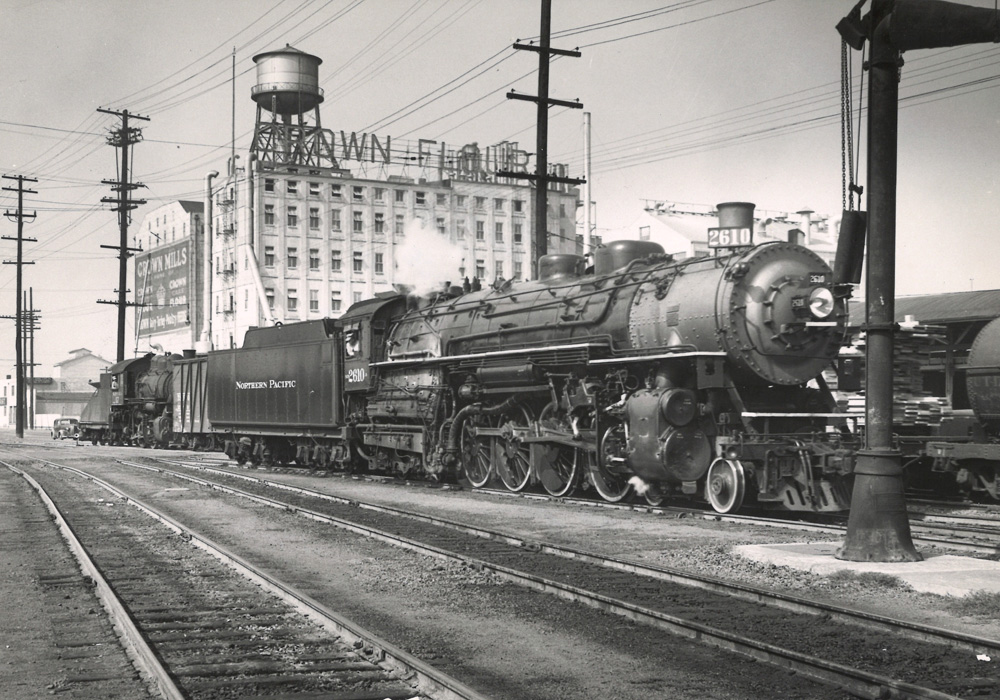
Q: I have a 5’-6” x 6’-0” HO scale layout modeling south-central Oregon in the years 1950 to 1979. I want to model the industries that I grew up around in that area – potatoes, wheat farming, cattle ranching, and logging. The members of the train club I’m in say that the railroads quit hauling potatoes, wheat, cattle, and lumber in that area a long time ago. Am I modeling the wrong industries? Should I go with only one of them?
I have also been told that my locomotives – 0-4-0, 0-6-0, and 0-8-0 steam locomotives – were not in use by my time period. But I still saw those old locomotives in the area, even though they only ran some 60 miles one way and back. – Russell C. Brenchley, Cottage Grove, Ore.
A: When your train-club mates say your layout isn’t prototypical, repeat after me (and Trains.com video star Steve Brown): “It’s my railroad.” That’s all you need to say. If building and operating your layout makes you happy, you don’t have to justify your choices to anyone.
Besides, you have facts on your side. Oregon is still one of the biggest producers of potatoes in the country. According to potato-industry website Spudman, despite railroad staffing and scheduling problems, the railroads still handle 30 percent of potato traffic. Although that article isn’t dated, it seems recent rather than historical, so back in the era you’re modeling potato rail traffic would likely be even higher.
Other data support your other industry choices. While Oregon isn’t a particularly large producer of wheat compared to the Great Plains states, it is a major destination of grain traffic. According to a 2016 analysis of grain traffic in the U.S., Oregon was the fourth-largest destination of wheat shipments by rail. This traffic was bound not just for the export market, but also to large flour mills in Portland and elsewhere, like the Crown Flour mill shown in the photo above.
According to Jeff Wilson’s book Livestock & Meatpacking (Kalmbach Books), by the end of the period you model, the combination of inexpensive refrigeration, highway trucks, and regional meat-packing plants spelled the doom of cattle movements by rail. But in the early years of your era, cattle trains would certainly not look out of place on your railroad. Especially not when pulled behind a steam locomotive.
And you don’t need my help to justify modeling the logging industry in the Pacific Northwest, in any era. I don’t think you’re modeling the wrong industries for an Oregon short line.
As for fitting all those industries in a 33-square-foot HO scale railroad, there are options. A cattle yard can be positioned along the fascia, only an inch or so deep. This is actually more realistic, since a cattle yard that extends into the aisle can be imagined as much larger than one small enough to be represented in its entirety on your compact layout. The logging industry could be represented by a transload crane between your mainline and a dummy narrow-gauge logging line. Modeling agriculture does tend to take up a lot of space, but flour mills, potato warehouses, and grain elevators can likewise be modeled in selectively compressed form.
Although it’s plausible steam switchers like the ones you mention might still be in revenue service in the 1950s, especially on a branch line or short line, your train-club buddies are right that they wouldn’t still be hauling freights in the 1970s. Maintenance and fuel costs would be prohibitive. But when they point it out, just repeat that mantra: “It’s my railroad.”
Send us your questions
Have a question about modeling, operation, or prototype railroads? Send it to us at AskTrains@Trains.com. Be sure to put “Ask MR” in the subject.














All good advice.
Especially the space allocation for log transfer, the hint of a large cattle yard, and compressed ag. produce warehouses.
I would look to incorporate a detachable/moveable fiddle/staging yard for operation.
Dr. Layout